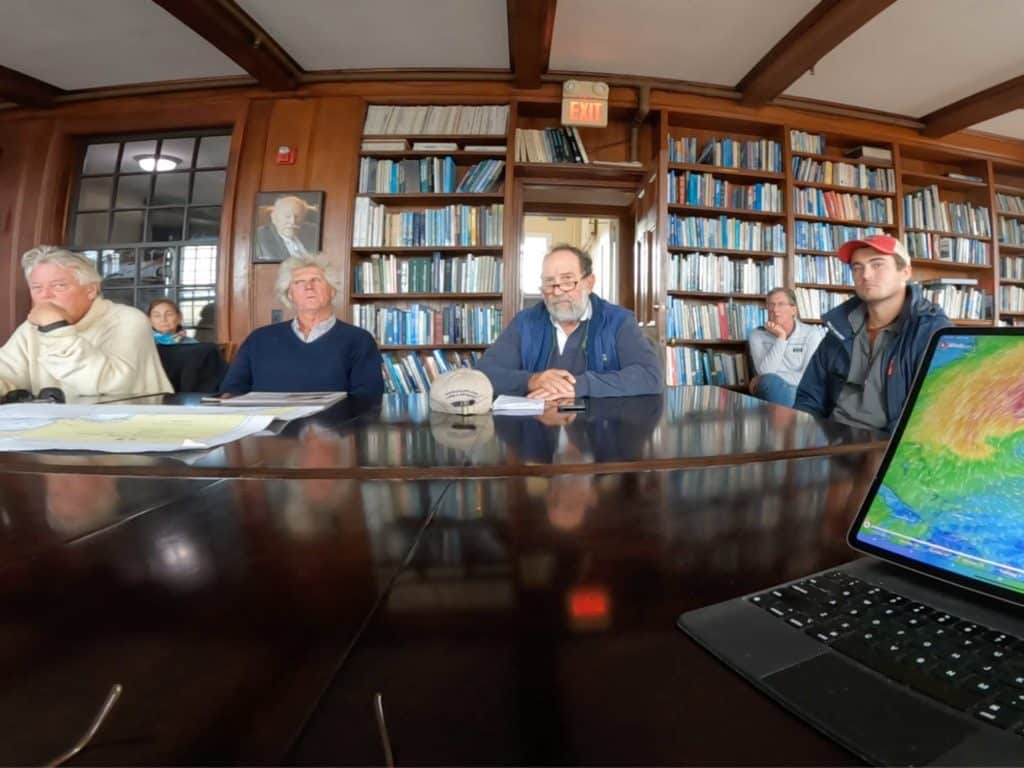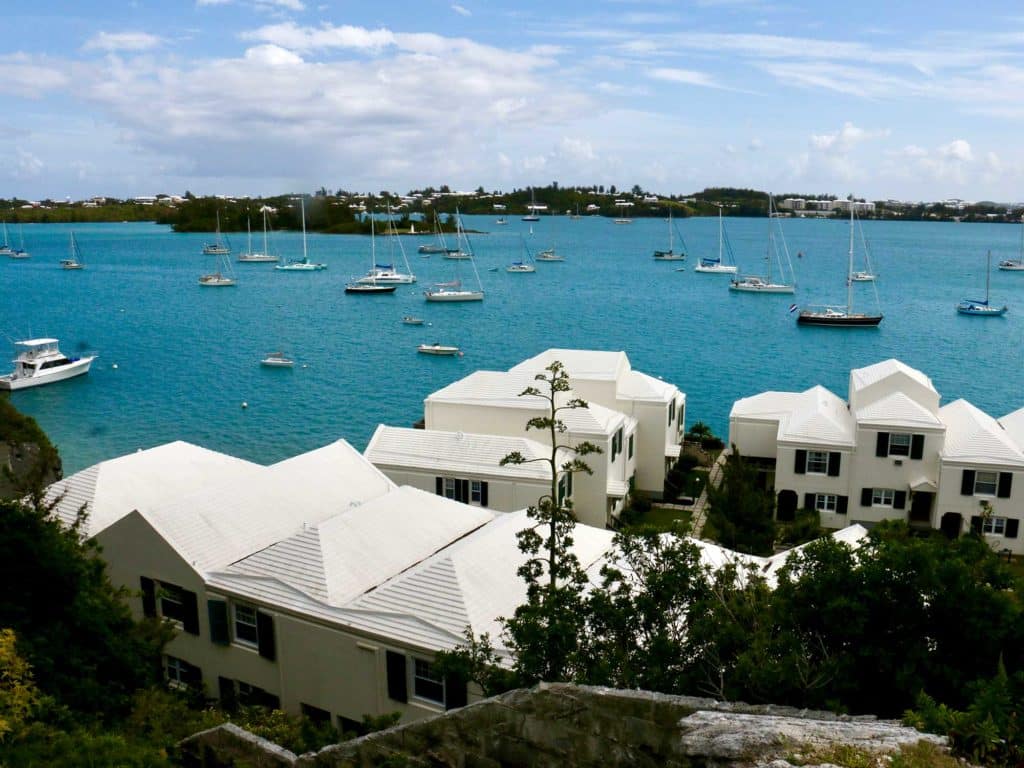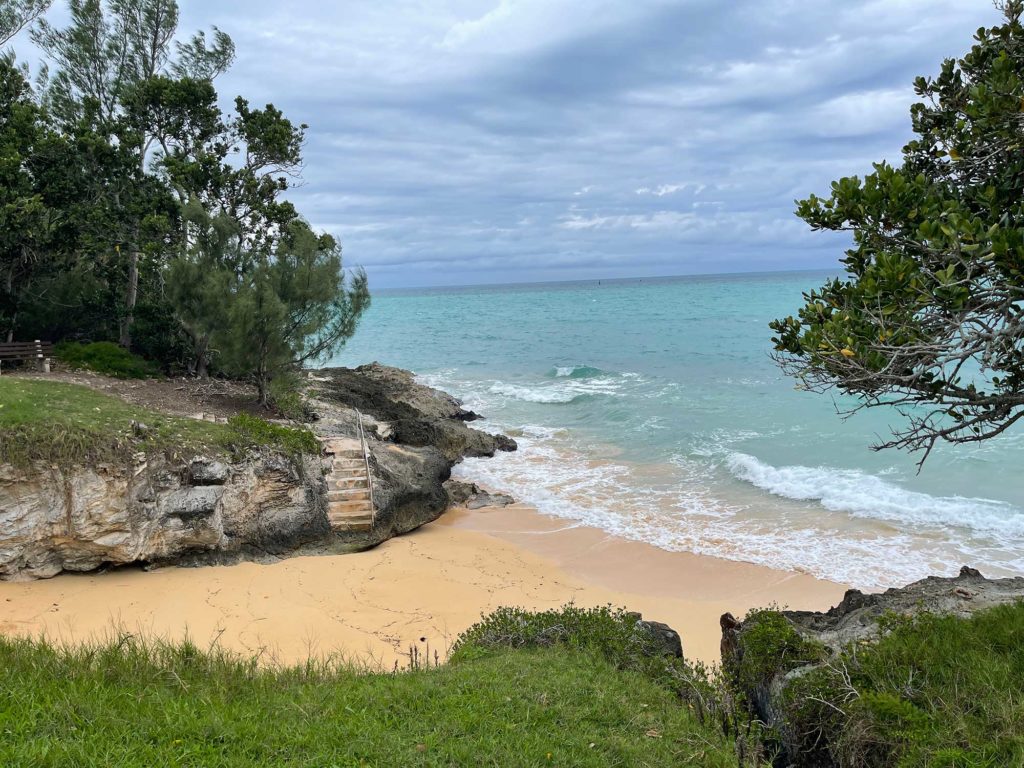
Two fleets departed the US East Coast this past fall, bound for the Caribbean as part of annual rallies to the islands. The North American Rally to the Caribbean, a 1,500-mile offshore voyage from Newport, R.I., to Saint-Martin via Bermuda, was “a piece of cake,” as one sailor put it. But the other, the 2022 Salty Dawg Sailing Association Rally, well, that’s a different story.
The 22nd annual NARC departed Rhode Island on October 30 with 19 boats that arrived in Bermuda without incident less than four days later. Another five boats, part of the Salty Dawg Sailing Association Rally that historically leaves from the Chesapeake area, signed on to join the Bermuda-bound NARC fleet—but two of those boats turned back before reaching the Gulf Stream, and two never got out of Newport.
Hank Schmitt, who has been organizing the Newport-based NARC for 22 years, arrived in Bermuda on his Swan 48 Avocation in three days, 22 hours. He said the boat rode the Gulf Stream for 30 hours and pushed along at 2-plus knots, knocking half a day off a four-day trip.
Steve Burlack, owner of the J/46 Arrowhead, also reported no issues. “Fun trip,” he said. “Pretty much the same as the other four times I’ve sailed [to Bermuda]. The Gulf Stream presented no major issue. One rough night with squalls, thunder and lightning, with winds 30-plus knots. A good reaching breeze filled in after that, and we were flying the rest of the way. [We sailed] mostly one reef in the main and flew a No. 4 on inner forestay. Then rolled out the 104 percent the last day. We were in good company with the NARC boats the entire trip. Four of us came in pretty much together.”

Around the same time the NARC departed Newport, four sailboats left the Chesapeake to join the NARC in Bermuda. Three boats arrived in St. George’s without incident, and one turned back. Solana V, Endeavor 2 and Cameo made the crossing in less than four days.
“The first night in the Gulf Stream was rough, with winds from north,” reported Douglas Hauck, aboard Cameo, a 48-foot Leopard. “One of the mainsheets broke in the middle of the night, but we were able to keep the main up. Fixed the following morning. Day three, nice sailing, but the night was very rough. Confused seas. We took the main down during the night when it got squally and motorsailed the rest of the way with full jib. We hit a 40-knot squall a few hours before entering the harbor. No issues entering the harbor in the dark with north-northeast winds.”
After a few days of parties, rest and provisioning, on November 8, half the NARC fleet departed Bermuda for the 875-mile sail to Saint-Martin. The rest of the fleet left five days later.
On November 13, Schmitt on Avocation arrived in Saint-Martin. “Pretty easy passage down from Bermuda,” Schmitt said. “More rain than normal first two days, then motored for a day, then nice sailing in the trades the last day.”
All in all, this year’s NARC Rally went off without any serious incident—but the Salty Dawg Sailing Association’s Rally to the Caribbean was not so lucky. The rally had amassed more than 120 yachts in marinas and anchorages near the mouth of Chesapeake—the largest flotilla in the Salty Dawg’s 11-year history. Most boats expected to depart November 1 for the nonstop, 1,500-mile sail to Antigua. Another 30 boats were planning to depart the same day, but were bound for the Bahamas.
The start was postponed when a disturbance in the middle of the Bermuda Triangle had forecaster Chris Parker, from Marine Weather Center, worried. He couldn’t see a weather window opening any time soon. Parker suggested that the boats planning to sail to the Bahamas could depart November 1, provided they aimed to arrive before Friday’s increased easterly winds, and tried to stay west of the ridge. That ridge eventually turned into a subtropical storm and Hurricane Nicole.
Around 30 boats elected to head for the Bahamas, leaving the Chesapeake on October 30 and 31. They sailed around Cape Hatteras and headed south, inside the Gulf Stream, turned east to cross the stream near 34 north, and then headed south again for the Bahamas. Another seven boats elected to creep along the coast or down the Intracoastal Waterway. A few dropped out of the rally. The remaining 60 boats stayed in Hampton, Virginia, waiting for better conditions. They waited nearly two weeks.
As it turned out, subtropical storm Nicole turned west, heading for the Abacos, where the 30 Salty Dawgers were hunkering down. Mark Hill, on the Tayana 48 Oasis, was docked at the Abaco Beach Club marina in Marsh Harbour when the storm arrived. “It was a wet and wild night, and wild all the next day,” he said. “It blew 50 knots for hours with gusts to 70.” After blowing over the Abacos, Nicole became a Category 1 hurricane, and one day later slammed into Florida’s East Coast.
Despite all the predictions and warnings, two of the Salty Dawg yachts left the Chesapeake on October 31, and somehow made it all the way, nonstop, to the Caribbean in less than 10 days.
“We had no plans to stop in the Bahamas,” Mark Kerestres reported after his Catana 46 Inio arrived in Puerto Rico, nine days out of the Chesapeake. “We planned to just keep going as far south and as far east as we could. The islands were there if we needed to stop. We kept west of the ridge that developed into the tropical storm, steering south. We threaded our way through the lower Bahamas at 10 knots in a south-southeast wind, 20 to 25, with higher gusts in squalls.”
The catamaran Vanamo, a Lagoon 400, also elected to bypass the Abacos and kept sailing south. They picked a more eastern leg but did stop for fuel at Cockburn Harbour in the Turks and Caicos, and, later, in St. Thomas, arriving in Saint-Martin on November 12—the same day the remaining 60 Salty Dawg boats left the Chesapeake.

Parker had advised the Salty Dawg fleet that there was an option for going south, outside the Bahamas to the Turks and Caicos and then east along Hispaniola and Puerto Rico, motorsailing. The disturbance that turned into Nicole had suppressed the trades and sent the winds north around the developing low. This allowed for a westerly wind to affect the area north of the Greater Antilles, giving the two Salty Dawg catamarans a way to make it all the way down.
Parker advised the remaining fleet on an area of potentially reinforced trades affecting the fleet as they turned south, but it never developed, and the 50 or so boats that left the Chesapeake on November 12 had a delightful trade-winds romp all the way to Antigua. There were a few problems reported, but nothing serious; one boat lost its rudder, but managed to return to port, while another lost its engine and was towed back to port.
More than a hundred boats in this year’s Salty Dawg Rally made it safely to their destination, one way or another.








